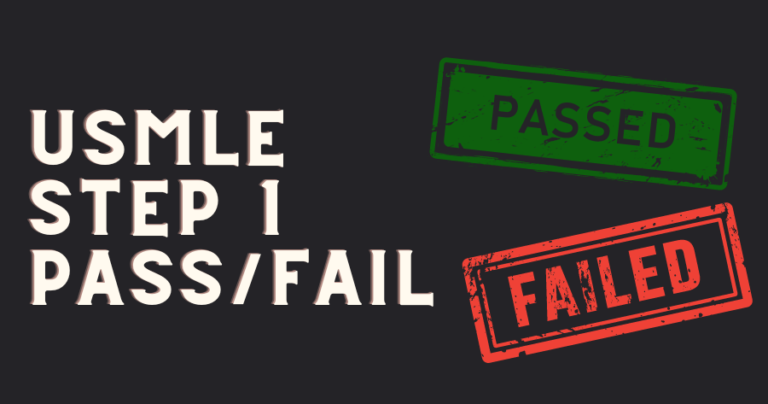The United States Medical Licensing Examination (USMLE) Step 1 has long been a critical milestone for medical students and a determining factor for residency placements. In 2024, the scoring system transitioned from a numerical score to a usmle step 1 pass/fail system, stirring up waves of curiosity and anticipation among students, educators, and residency program directors alike. This shift aimed to alleviate the pressure and reduce disparities among examinees, yet its impact on test-takers performance has remained a subject of intrigue. In this Article explores, we dive into the data to explore the trends observed among various examinee groups following the introduction of the pass/fail system and discuss potential factors driving these changes.
USMLE Step 1 Passing scores in 2024
The passing score for the USMLE Step 1 exam is 196, and achieving this score results in a designation of “pass” on the USMLE Step 1 results. However, in order to reach this passing score, test takers generally need to answer correctly at least 60% of the items on the exam. These minimum passing scores are determined by the USMLE management committee, and they periodically review and update these standards every four years.
Background on the USMLE Step 1 Pass/Fail Scoring Change
The decision to transition the USMLE Step 1 scoring system to USMLE STEP 1 pass/fail has been a topic of intense debate among medical educators, students, and residency program directors. Prior to the change, Step 1 scores played a pivotal role in determining residency placements, which led to an unhealthy emphasis on achieving high scores. This hyper-focus on test scores not only contributed to increased stress and anxiety among medical students, but also raised concerns about the potential for overlooking other crucial aspects of medical education, such as clinical skills, communication abilities, and empathy.
The USMLE Step 1 pass/fail scoring system was introduced as a means to address these concerns and promote a more balanced approach to medical education. However, critical thinkers might argue that while this change addresses the issue of test score fixation, it could also inadvertently give rise to new challenges. For instance, residency programs may now struggle to differentiate between applicants without a numerical score, potentially leading them to rely more heavily on other factors or even develop new ranking systems. Consequently, it is essential to examine the impact of the USMLE Step 1 pass/fail transition on examinee performance and its potential implications for the broader medical community.
Data Presentation: Performance of Examinee Groups in 2021 and 2022
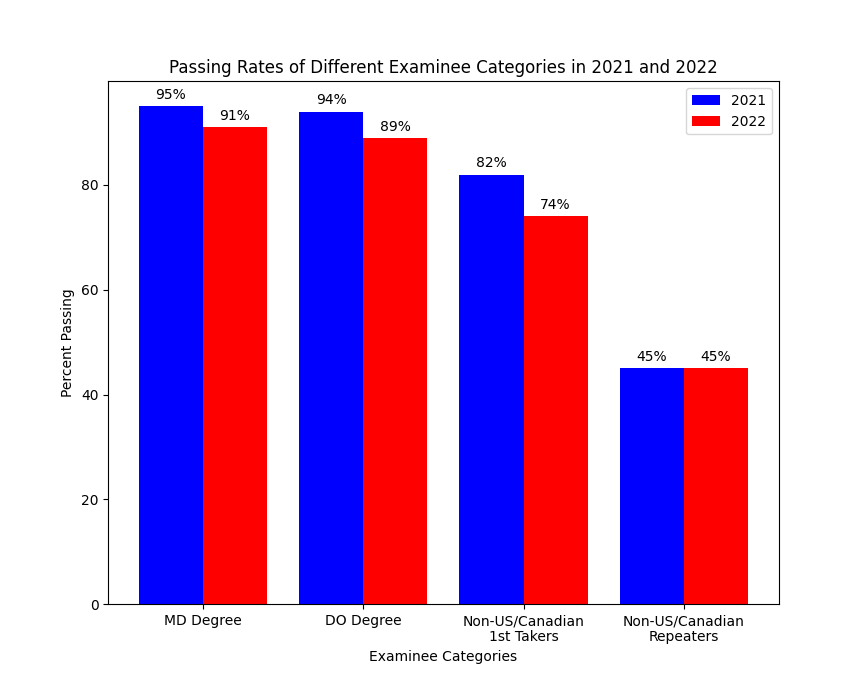
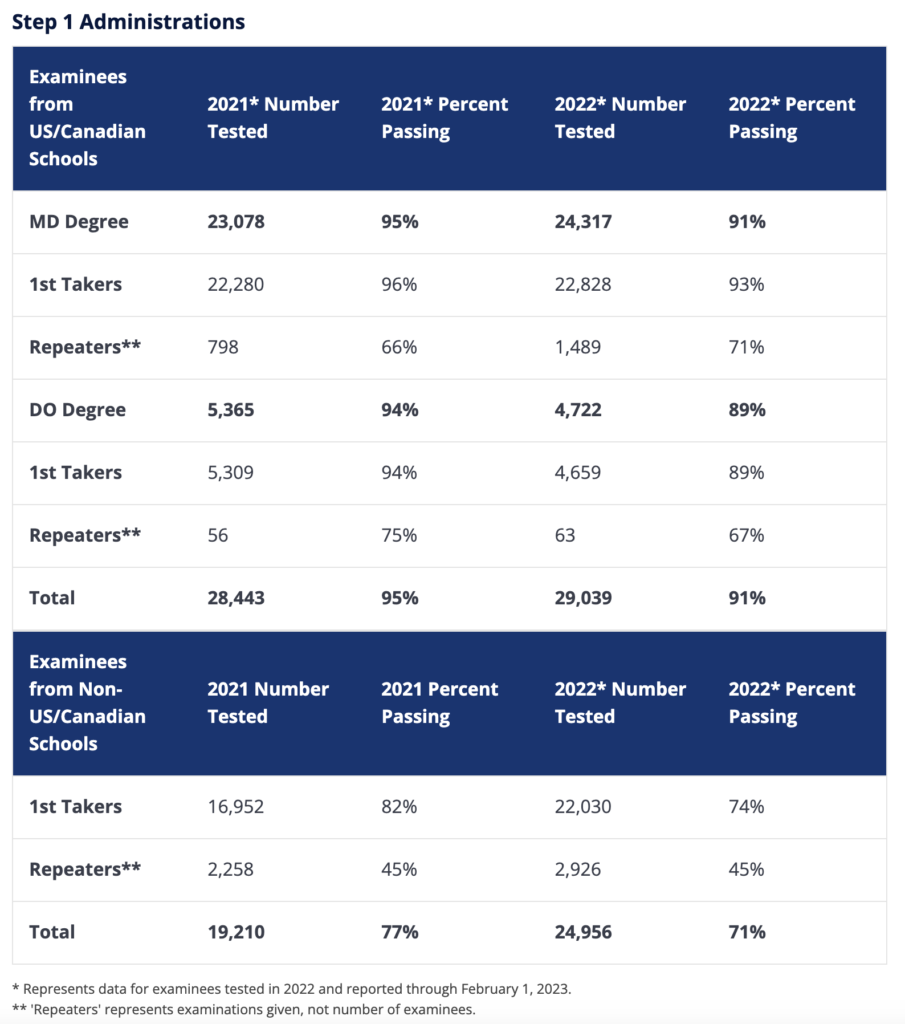
Analysis of the Trends: Passing Rates and Test-Taker Numbers
Results
Our examination of performance data for USMLE Step 1 from 2012 to 2022 has revealed significant trends among individuals taking the test for the first time, hailing from diverse educational backgrounds. We’ve observed distinct patterns among those hailing from non-US/Canadian schools, US/Canadian MD degree programs, and US/Canadian DO degree programs.
Non-US/Canadian schools
Among first-time test takers from non-US/Canadian schools, the pass rate exhibited fluctuations throughout the decade. The rate peaked at 87% in 2020 but experienced a decline to 74% by 2022, coinciding with the transition to a pass/fail scoring system. Interestingly, despite scoring changes, there was a consistent increase in the number of test takers, indicating sustained interest in the examination.
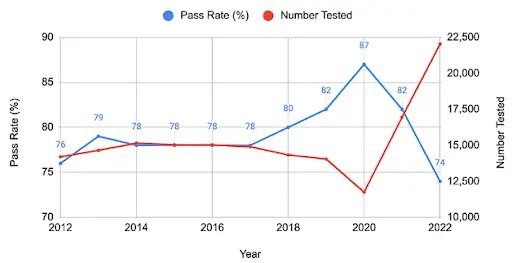
US/Canadian schools (MD degree)
For first-time test takers from US/Canadian MD degree programs, the pass rate remained relatively high, with a minor peak at 98% in 2020. However, there was a noticeable decrease to 93% in 2022. Over the years, there has been a steady rise in the number of test takers, particularly evident from 2020 to 2022, indicating a growing cohort of aspiring physicians.
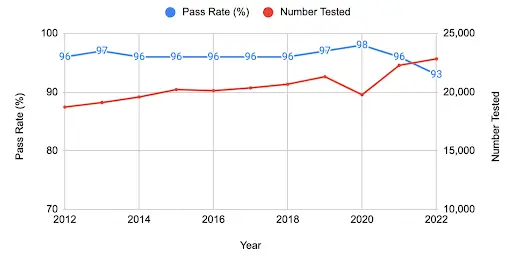
US/Canadian schools (DO degree)
First-time DO test takers from US/Canadian schools saw a consistent increase in examinees, reaching a peak of 5,309 in 2021. This surge reflects the expanding role and recognition of osteopathic medicine within the healthcare landscape. However, this growth was accompanied by a slight decline in the pass rate, from 92% in 2012 to 89% in 2022.
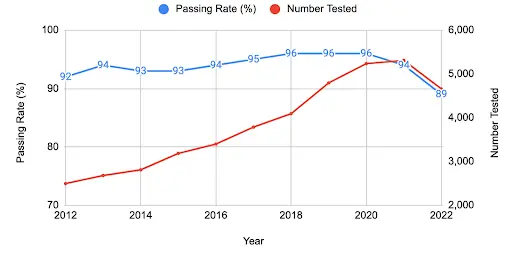
Comparative Analysis
When comparing the performance of the three groups, test takers from US/Canadian MD degree programs consistently demonstrated higher pass rates throughout the decade. However, all groups experienced a decline in pass rates in 2022, coinciding with the implementation of a pass/fail scoring system for the USMLE Step 1. The most significant relative decline was observed among non-US/Canadian schools’ first-time test takers, with an 8% decrease from 2021 to 2022.
Challenges and Opportunities for Examinees under the USMLE Step 1 Pass/Fail System
| Aspect | Challenges | Opportunities |
|---|---|---|
| Differentiation | Harder to stand out without numerical scores | Promotes holistic approach to medical education |
| Pressure | Pressure shifts to other standardized exams | Reduced stress related to USMLE Step 1 preparation |
| Subjective Factors | Greater reliance on subjective factors in evaluations | Encourages diverse experiences and skill development |

Scores
Step 1 results are provided as either pass or fail. For Step 2 CK, a score of 214 is reported, while Step 3 results in a score of 200.
- The USMLE Management Committee determines the minimum passing score, reviewing data for each component in the USMLE sequence approximately once every four years. The committee then decides whether to adjust the recommended minimum passing score.
- Examination data from USMLE exams may be utilized by the USMLE program or shared with third parties for research and disclosed purposes authorized by you at the time of data collection.
- In such cases, data confidentiality is maintained, and individual examinees remain unidentifiable in any publications. If you prefer to restrict the use of your examination data for such purposes, you must notify the USMLE Secretariat in writing no later than 30 days before your administration.
Conclusion
In this ever-evolving landscape of medical education, our comprehensive USMLE Step 1 course is designed to help you navigate the pass/fail system with ease and confidence. With expert guidance, tailored study materials, and personalized support, our course offers everything you need to succeed. Don’t leave your future to chance – invest in your success today and unlock your full potential with our USMLE Step 1 course. Sign up now and take the first step towards a successful medical career!





